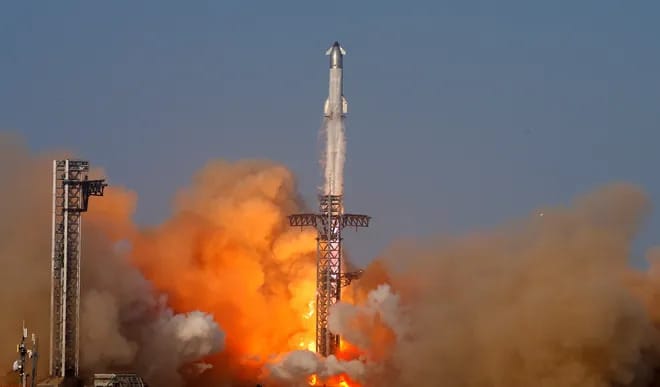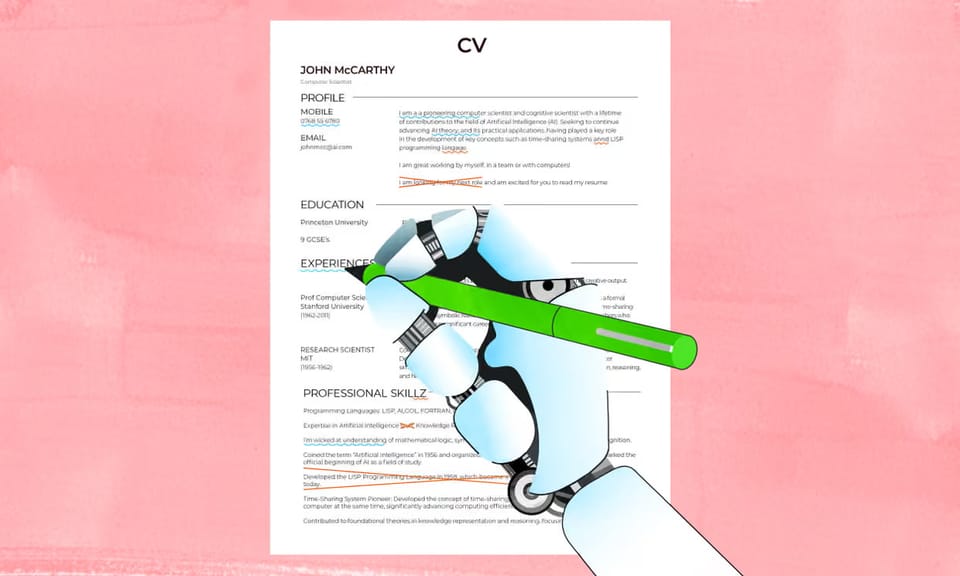How Many More Explosions Can SpaceX Afford Before NASA Looks Elsewhere?


In this issue:
- Big tech tries to block regulation for the next 10 years
- SpaceX faces another Starship explosion that could delay NASA plans
- A massive volcanic eruption in Indonesia disrupts flights and forces evacuations.
Let’s get into it.
Is Big Tech Trying to Block States from Regulating AI for 10 Years?
Briefing: Big tech companies like Amazon, Google, Microsoft, and Meta want Congress to block states from making their own AI laws for the next 10 years. They’ve added this idea into a large federal spending bill that's now being debated in the Senate.
Details: The proposed freeze would stop all U.S. states from creating or enforcing AI-related rules until at least 2035. Tech companies say this will prevent a confusing patchwork of state laws and help the U.S. stay competitive with countries like China. Supporters, including industry groups like INCOMPAS and Senators Thom Tillis and Steve Daines, argue that having one national policy is better. Some even want to tie broadband funding to state compliance. But critics see this as Big Tech trying to avoid accountability. Over 260 state lawmakers and more than 140 public interest groups are pushing back, warning that this move would block states from acting on serious issues like biased algorithms, deepfakes, and data privacy.
Why It Matters: If this 10-year ban goes through, AI oversight in the U.S. could be left in limbo, states wouldn’t be allowed to act, and Congress still hasn’t passed any strong federal AI laws. This would give companies more freedom to roll out new AI tools without local checks. The Senate now has to decide whether to keep or cut the proposal before the July 4 deadline. The outcome could shape who gets to set the rules for AI in America: Washington or each individual state. (PYMNTS)
How Many More Explosions Can SpaceX Afford Before NASA Looks Elsewhere?
Briefing: SpaceX’s Starship rocket exploded during a fueling test late Tuesday night in Boca Chica, Texas. The prototype, called Ship 36, was being prepared for a static-fire engine test when the explosion happened. No injuries were reported.
Details: The explosion occurred around 11 p.m. Central Time and was likely caused by a failure in a pressurized tank in the rocket’s nose section. The blast caused a massive fireball and sent debris flying across the test site, damaging nearby equipment. The test area, known as the Massey site, was evacuated and safety zones were already in place, so no one was hurt. This is the fourth Starship explosion this year, following similar incidents in January, March, and May. Each of these tests is part of SpaceX’s “test fast, fail fast” approach to rocket development.
Why It Matters: The destruction of Ship 36 could delay the next big Starship flight test, which was planned for late June. Starship is a key part of NASA’s Artemis program and Elon Musk’s long-term plans to reach Mars. Repeated test failures raise questions about the rocket’s readiness and reliability. Even though Musk called the explosion “just a scratch,” future launches may need more safety checks and investigation before they move forward. (USA TODAY)
Volcano Blasts 6 Miles High and Bali Flights Canceled in a Flash
Briefing: A volcano in Indonesia called Mount Lewotobi Laki-Laki erupted on Tuesday, June 17. It shot a huge cloud of ash almost 7 miles into the air. Right after the eruption, the government raised the danger alert to the highest level and told people nearby to leave the area.
Details: The eruption happened on Flores Island around 5:30 PM local time. A smaller eruption followed the next morning. The area around the volcano was put on full alert, and officials expanded the “danger zone” to 8 kilometers (about 5 miles) from the volcano’s top. Villagers from nearby communities like Boru, Hewa, and Watobuku were quickly moved to safer shelters.
At the same time, ash from the volcano started messing with air travel. Flights going to popular tourist places like Bali and Flores were either delayed or canceled. Planes from Australia, Singapore, New Zealand, and other countries were affected. One of the local airports even had to close temporarily.
Why It Matters: This eruption is a big deal for safety and travel. People living near the volcano had to leave their homes, and many travelers had their vacation plans ruined. This volcano has erupted before in March, May, and even last year so experts say it’s something to keep watching closely. It shows how powerful nature can be and how quickly things can change. (CNN Travel)
Can smart computer systems warn us before a volcano erupts and help keep planes safe? AI tools like NASA’s disaster models and IBM’s weather AI; work like super-fast brains that look at patterns from satellites, ground sensors, and past eruptions to guess when something dangerous might happen. Other systems, like Spire Aviation and VAACs, help track ash clouds in real time and tell planes where it’s safe to fly. These AIs can’t stop eruptions, but they try to keep people and planes out of harm’s way. (NASA)
*Disclaimer: The content in this newsletter is for informational purposes only. We do not provide medical, legal, investment, or professional advice. While we do our best to ensure accuracy, some details may evolve over time or be based on third-party sources. Always do your own research and consult professionals before making decisions based on what you read here.




